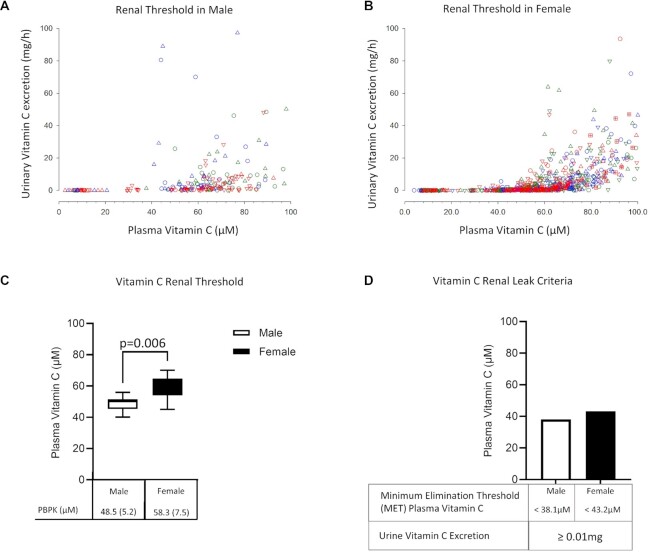FIGURE 2.
Vitamin C depletion–repletion study in healthy participants. (A, B) Urinary vitamin C excretion as a function of matched plasma vitamin C concentrations in healthy men (A) and women (B). Pharmacokinetic (PK) studies were performed as 1 component of dose–concentration studies (18, 19, 30) by administering intravenous or oral doses (15–1250 mg) of vitamin C on successive days at steady state. Blood samples were obtained at fixed intervals (18, 19). All urine voided during the test period was collected, and each urine void formed a timed collection. The total amount of vitamin C in each urine sample (mg) is indicated on the y-axis. Each symbol shape coupled to a specific color represents a different participant. Data are shown from 10–14 PK studies (5–7 oral doses; 5–7 intravenous doses) for each participant. Participants were 7 men and 10 women. (C) Estimated vitamin C renal threshold values in healthy men (open bar) and women (filled bar) using physiology-based pharmacokinetic modeling [PBPK, mean (SD)]. (D) Vitamin C renal leak criteria for men (open bar) and women (filled bar). Minimal elimination threshold (MET) was defined as 2 SD below mean renal threshold using PBPK modeling (see Methods section). Vitamin C renal leak was defined as abnormal urinary vitamin C excretion (>0.01 mg/total urine volume, limit of detection) occurring when plasma vitamin C concentrations are below MET values of 38.1 µM for men and 43.2 µM for women.

